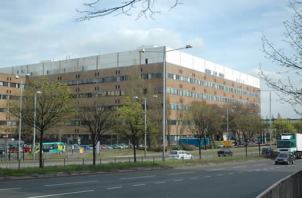Taking the temperature of the Medical School
 A £200,000 project is underway in the Medial School to reduce the temperature extremes experienced on D and E floors. Building users on these floors will benefit from a warmer building in winter and a cooler building during the summer, with the changes also reducing the University’s carbon footprint.
A £200,000 project is underway in the Medial School to reduce the temperature extremes experienced on D and E floors. Building users on these floors will benefit from a warmer building in winter and a cooler building during the summer, with the changes also reducing the University’s carbon footprint.
The construction of the building, with large service voids between each floor, means that there is considerable heat transfer to and from the voids during the year. Each service void has 95 open louvres - a series of horizontal slats designed to aid air flow, which are intended to avoid excessively high temperatures during the summer. However, such uncontrollable ventilation means winter temperatures can drop to 12°C, whilst summer temperatures can still exceed 30°C during calm weather conditions.
The project is installing fans, dampers and controls connected to the University’s Building Management System to provide controlled ventilation to the 190 open louvres in the two service voids. Reducing heat loss from the occupied floors to the voids during winter and reducing heat gain from the voids during summer is hoped to reduce energy bills by around £45,000 per year, saving around 155 tonnes of carbon dioxide per year – equivalent to driving an average car non-stop for 250 days.
Reducing heat loss during very cold weather will also enable the University to heat ‘hard to heat’ rooms to a suitable temperature without resorting to supplementary heaters or overheating other parts of the building.
The project is due for completion in mid-April.